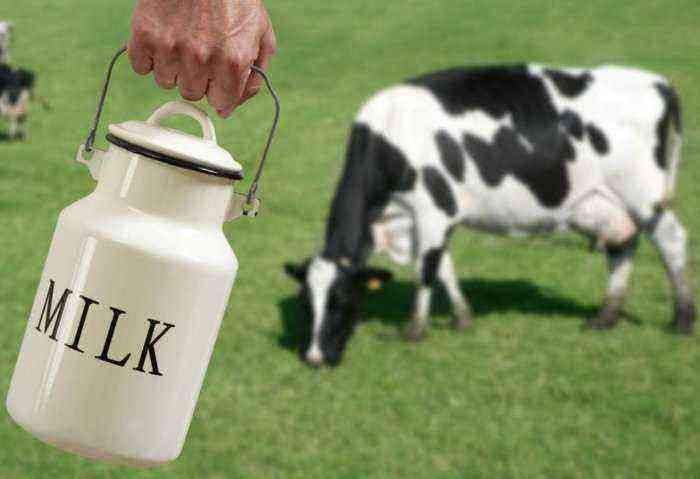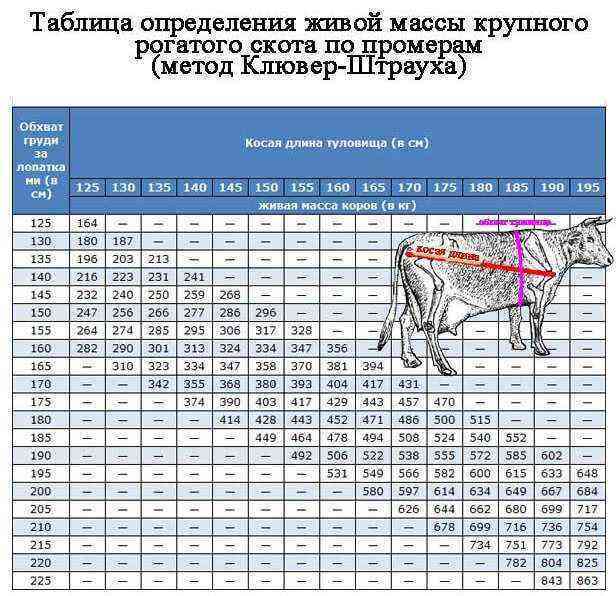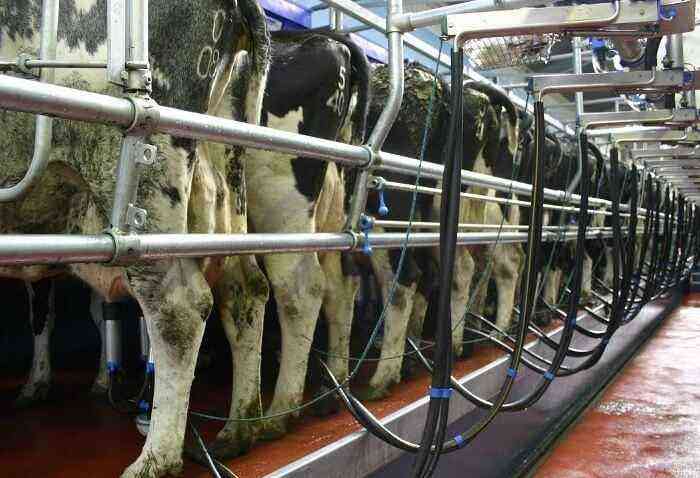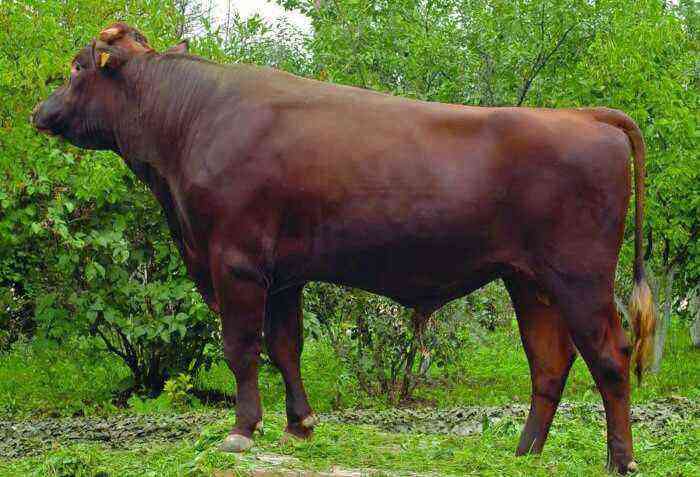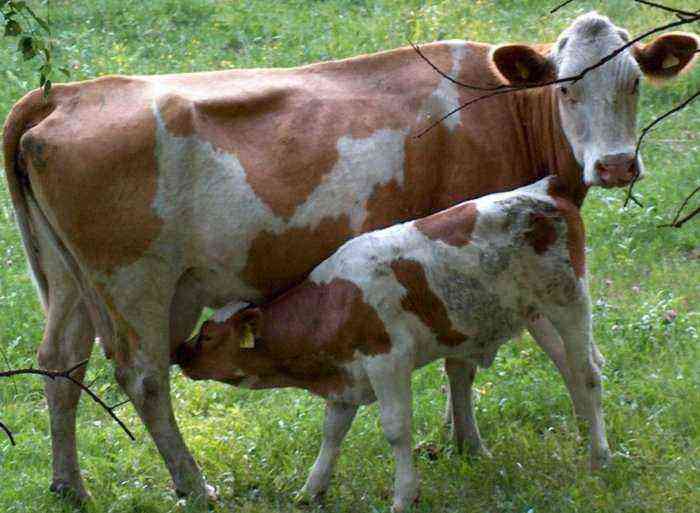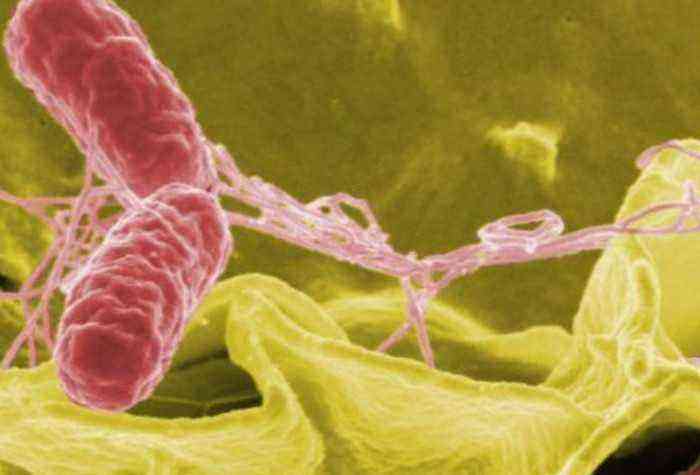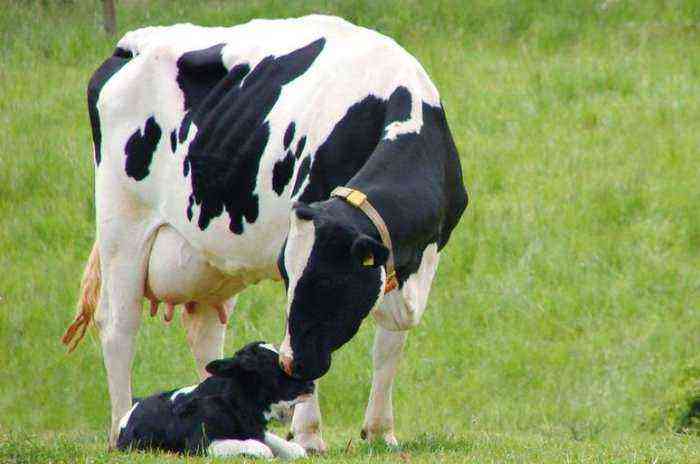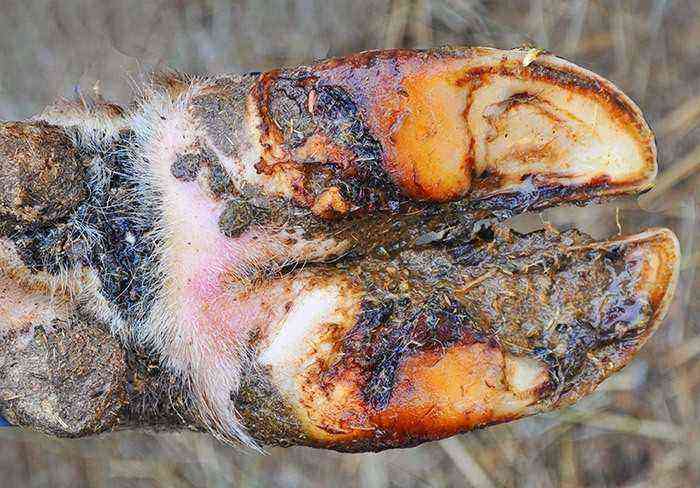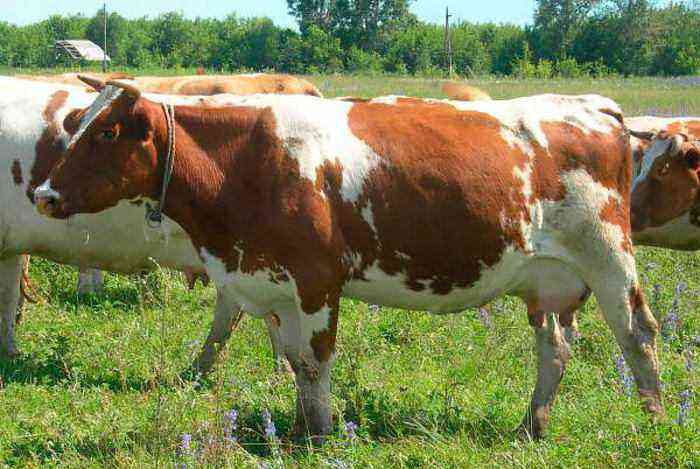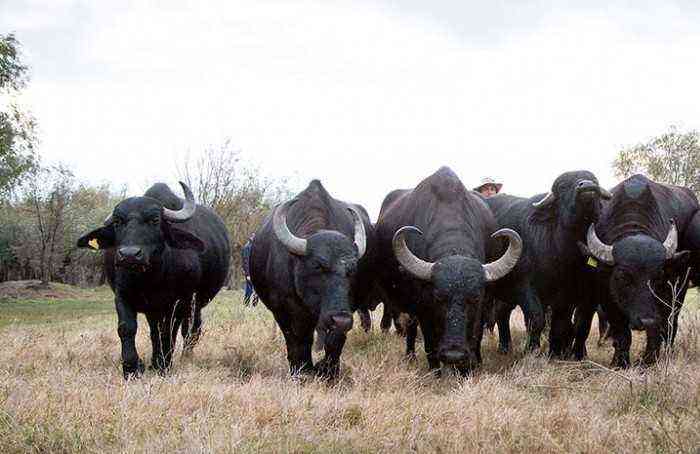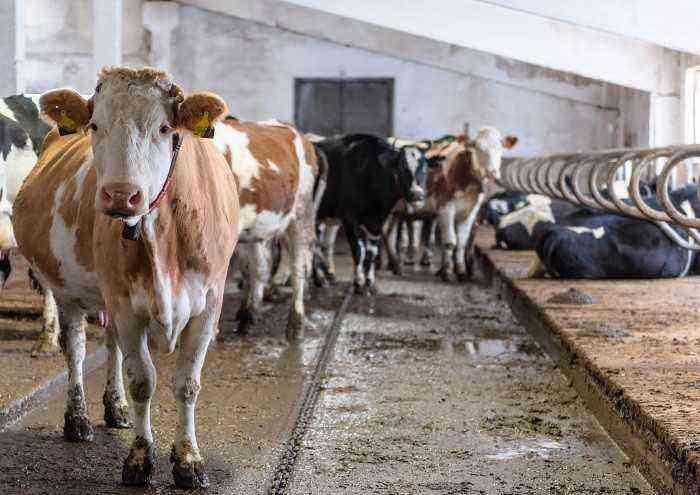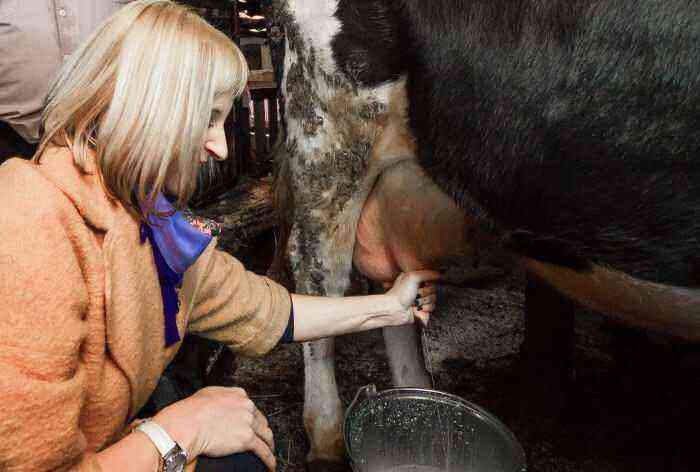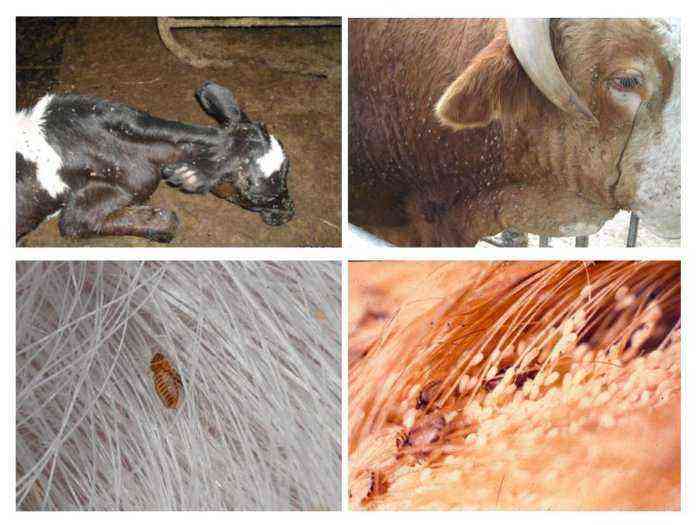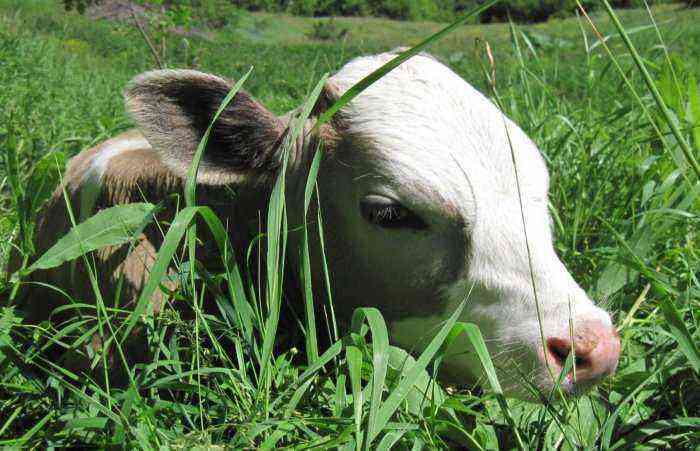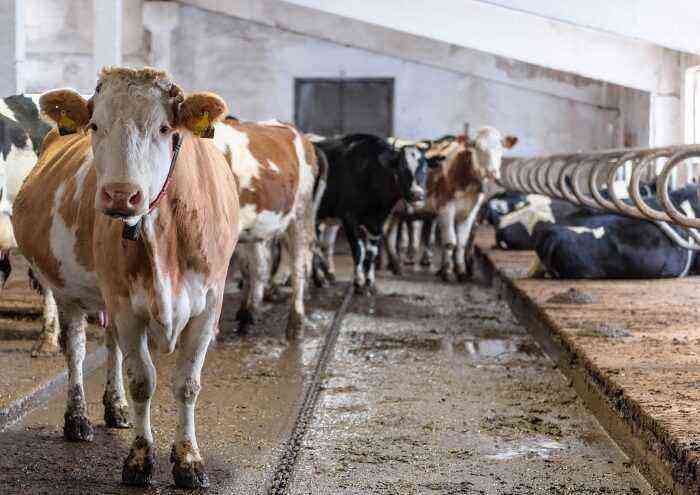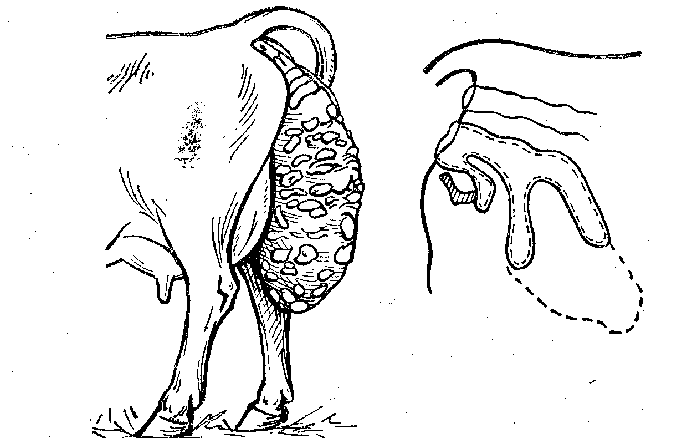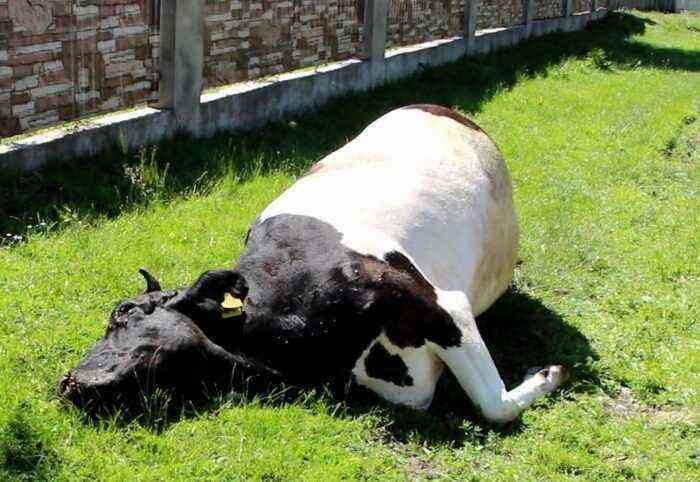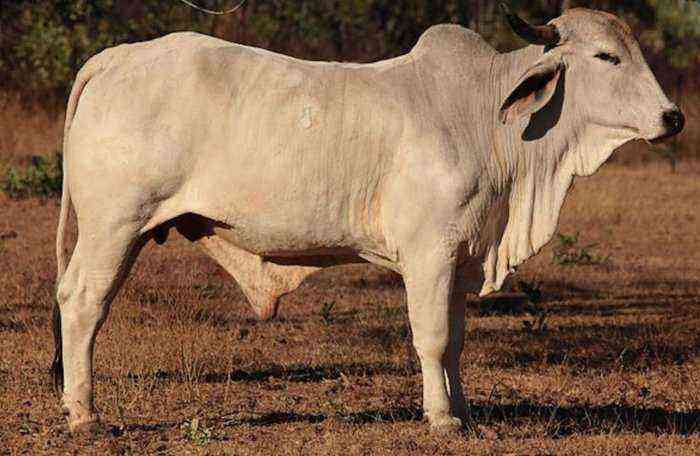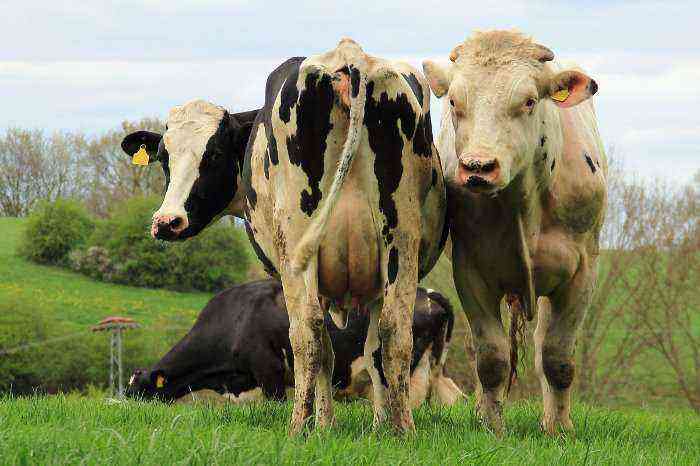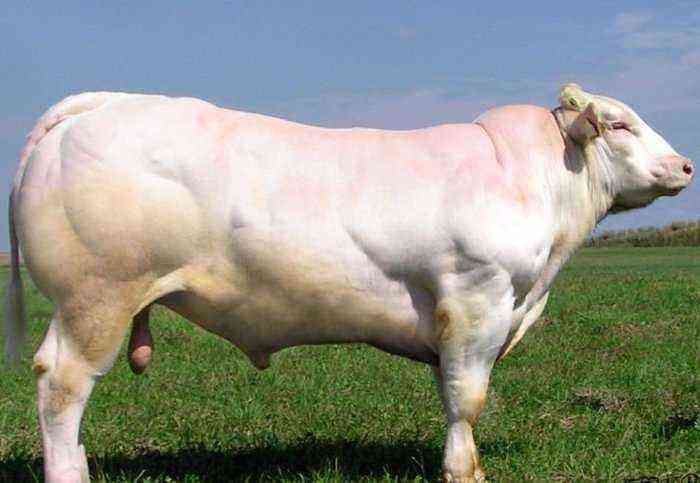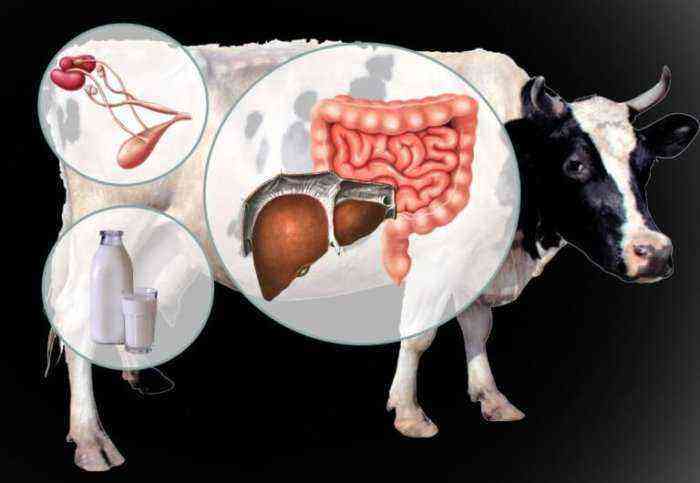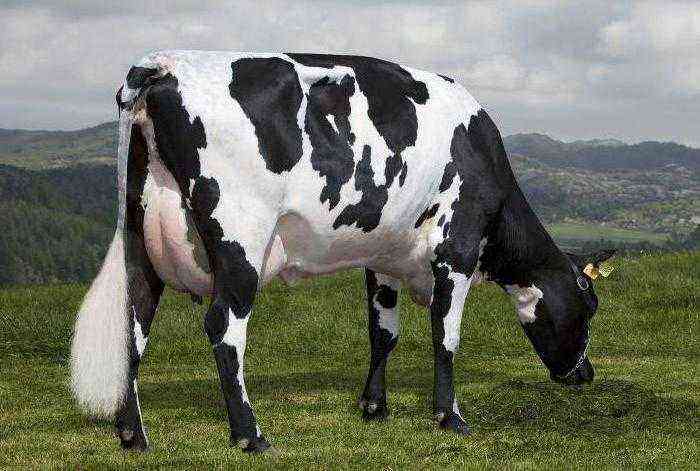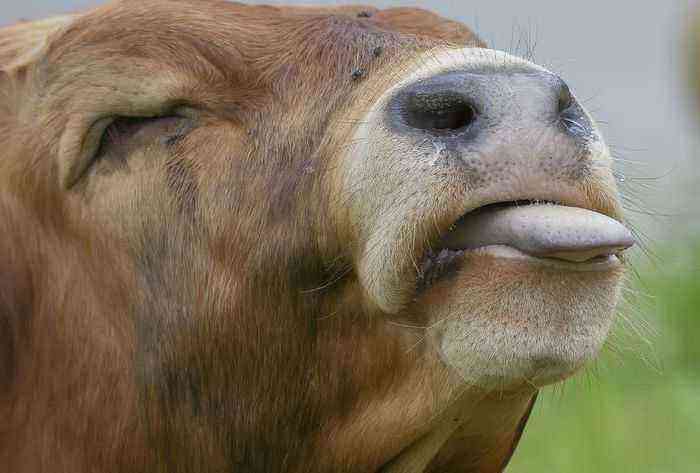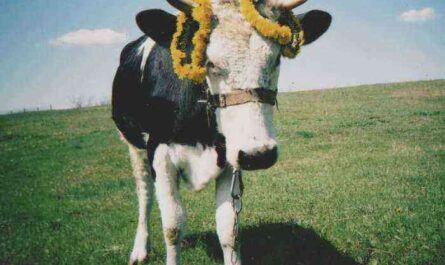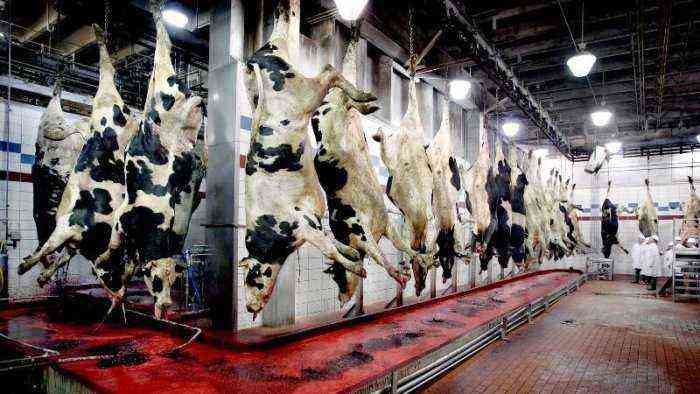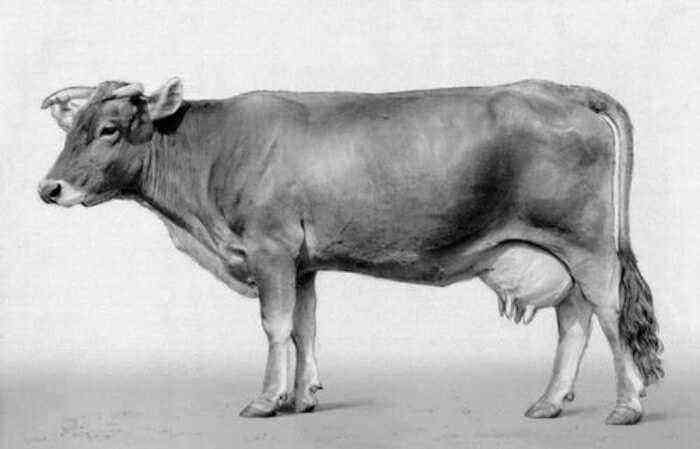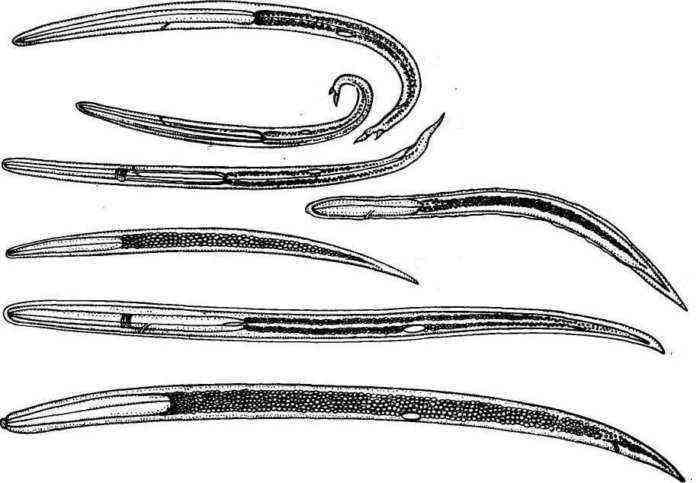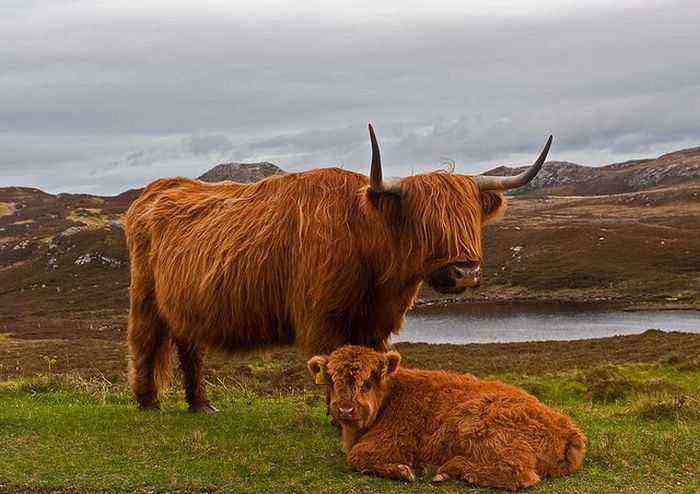It is very important for farmers to know the weight of a cow at different ages. This indicator is of particular importance when fattening animals. The higher it is, the more meat can be sold. The body weight of cattle depends on various factors, including breed, its change is also influenced by the conditions of keeping and the diet of animals.
The body weight of cattle depends on the breed
How much does a calf weigh at birth?
Farmers know that newborn calves weigh an average of about 40 kg. This value is indicative, it depends on the sex of the animal, the breed and the state of health of the cow mother. It is considered normal if the weight of the calf at birth is 8-10% of the weight of the cow that gave birth to it.
Attention! Gobies are born larger and weigh 38-42 kg, while females are smaller.
In the first month of life, the body weight of calves increases by 1,5 times. At this time, it is very important to control how young animals develop and grow. Significant downward deviations of indicators may indicate health pathologies.
Average weight of an adult cow
How much a cow weighs on average depends on the breed, conditions of keeping and feeding. The mass of representatives of the same breed line at the same age can vary greatly. For example, cows belonging to the selective weight category weigh 450-500 kg, and individuals of the first class – 400-450.
The average weight of a cow of the meat and dairy direction of productivity, receiving good nutrition, is 350-450 kg. The body weight index of two-year-old meat cows often reaches 600 kg. Adult bulls gain from 500 to 800 kg, and some individuals – 1000 or more kilograms.
Dependence of weight on breed and direction of productivity
Belonging to a particular breed plays a decisive role in how much a cow will weigh as an adult. Information about the physique and dimensions of animals is inherited. According to the type of productivity, breeds of cows are divided into 3 groups:
- dairy;
- meat;
- meat and dairy.
Each category of breeds is characterized by certain characteristics. Depending on the direction of productivity, the body type and diet of animals differ.
Dairy cow
Cows of dairy breeds are characterized by a developed udder. They provide farmers with high milk yield throughout the lactation period. Their diet contains more green fodder and hay.
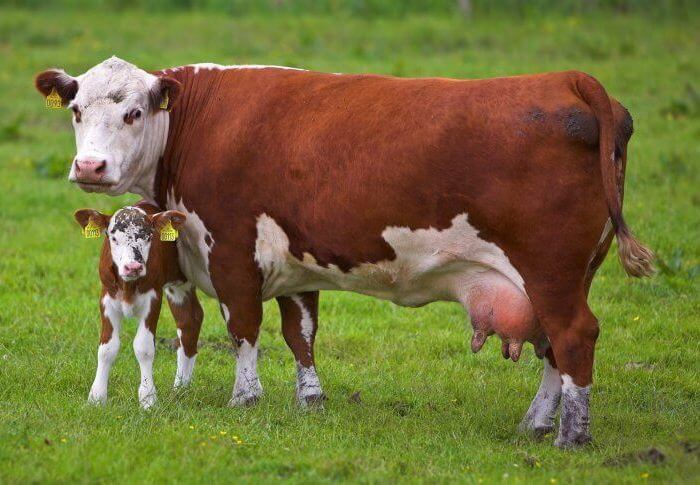
Cows of dairy breeds are characterized by a developed udder
Potatoes, which contribute to the growth of muscle and fat mass, are excluded from the cows’ menu, since starchy substances cause blockage of the milk ducts. Dairy cows are not prone to a rapid increase in body weight, since most of the nutrients are consumed by lactation. The average weight of a dairy cow is 360-500 kg.
Attention! Holstein breed is considered the largest of the dairy. The average body weight of an adult female is 650 kg, and that of a bull is 900-1000 kg.
Beef cows
Animals assigned to this group are distinguished by the ability to grow rapidly and increase body weight. Meat beef has a pleasant taste and tender texture. For high-quality fattening, farmers make up a certain diet for cattle, which includes:
- cereal crops;
- beans;
- vegetables and root crops;
- hay and fresh herbs.
Attention! An important role for proper metabolism is played by walking in the fresh air. Cows of the meat direction spend on the pasture for 10-12 hours daily.
The weight of cattle reaches its maximum mark at the age of two. There is no longer any point in fattening animals, they are sent to slaughter. The weight of a meat cow is 650-800 kg. There are record holders in this category of cattle, for example, the Hereford breed, which is distinguished by a longer body. At the age of 1,5-2 years, the body weight of a female reaches 900 kg, and a bull – 1200-1400 kg.
Meat and dairy cow
Rural residents and owners of small farms prefer to breed universal breeds of cattle for meat and dairy. The average weight of such animals varies between 450-700 kg. They depend on the quality of fattening, livestock conditions and other factors.
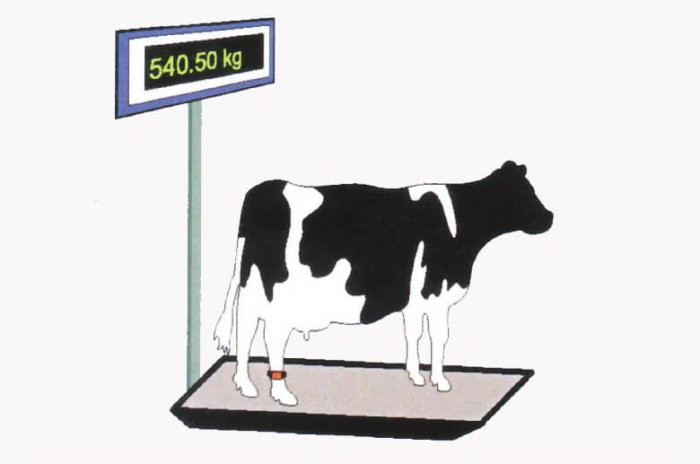
cow weighing
Influence of other factors on weight gain
In addition to belonging to a certain direction of productivity and breed, the weight of a cow depends on other factors:
- health conditions;
- conditions of keeping and feeding;
- age and gender.
Conditions of detention and food
Young animals grow quickly and develop properly when kept in comfortable conditions. In winter, the barn should be warm and dry, then the animals will not waste energy on heating their bodies. Do not allow the accumulation of stale air in the room, supersaturated with hydrogen sulfide and ammonia vapors. In such conditions, cows get sick more often, which means that their average daily weight gain will be minimal.
The correct preparation of the diet of cattle is the primary task of the farmer. Young animals should receive not only hay, but also the norm of succulent feed and concentrates. Vitamin and mineral supplements are also included in the daily diet of calves.
Stressful situations
Cattle do not tolerate stressful situations, such as long-term transportation. Farmers are advised to avoid transporting cows long distances shortly before slaughter, as they lose weight quickly.
Attention! Being under stress for a long time, the animal can lose up to 20% of its weight.
Prolonged exposure to negative factors causes a deterioration in the general condition of the animal, leading to fluid loss. As a result, not only the slaughter yield decreases, but also the quality of the meat – it becomes tough.
Age
From birth to 6 months, calves grow very quickly. At the age of one year, the weight of a heifer is 85-90% of the mass of an adult. Only by the age of 2, this figure reaches its maximum mark, provided that the animals are properly fed. It also matters how strong an individual’s immunity is. If a bull or heifer suffers an infectious disease, this factor will certainly lead to a slowdown in muscle mass growth.
The heaviest bulls in history
The undefeated champion in weight was a bull who lived in the last century named Dobryak Donetto. He was born in Switzerland and weighed 1 ton 740 kg. It was truly a huge representative of the porcelain breed. So far, no one has been able to beat his record.
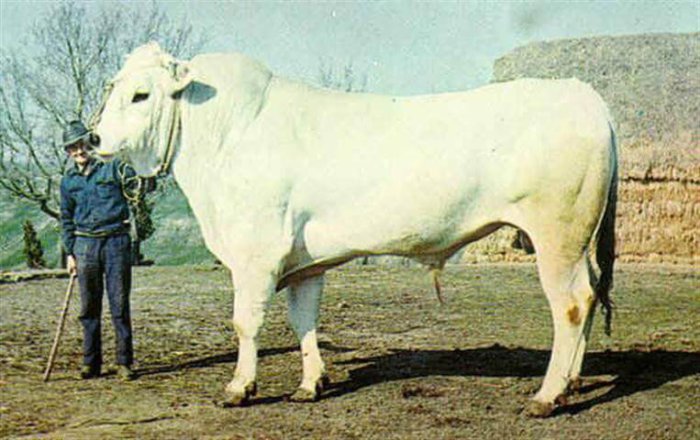
Good Donnetto
Later, a goby named Chili of the Freesian breed from England also became famous. Every year, his body weight increased by an average of 100 kg. When he was 10 years old, Chili weighed 1 ton 300 kg. Another contender for the title of champion belongs to the same breed as Chili, his name is Trigger. It is simply huge – the height at the withers is 1,96 m, and the length of the body has reached 4,3 m. The bull weighs 1 ton 200 kg.
The heaviest bull today is Field Marshal, he belongs to the Charolais breed. He comes from the English province. The growth of the bull reached 1,9 m, and the weight is 1 ton 700 kg. Despite its size, it seems cute, and its owner assures that the animal has a good disposition.
The weight of a cow is a key indicator for a farmer. Based on it, you can find out whether the animal is healthy, whether it develops correctly, whether its diet needs to be corrected. It is important to know the average weight of cattle for different breeds and age categories and use them to control the condition of your livestock.
